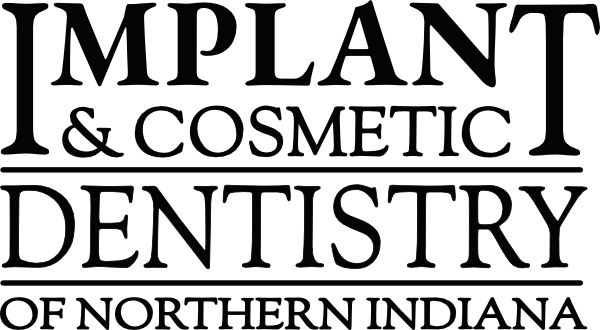Are you struggling with the discomfort of TMJ disorders and seeking a non-traditional solution? At Implant & Cosmetic Dentistry of Northern Indiana, we delve into the innovative use of Botox as a promising treatment option, offering relief and improved quality of life for our patients.
Understanding TMJ and Its Symptoms
Temporomandibular Joint Disorder, commonly known as TMJ, is a condition that affects the jaw joint and the muscles responsible for jaw movement. It can lead to a variety of uncomfortable symptoms, including persistent jaw pain, difficulty chewing, and a clicking or locking sensation when moving the jaw. Some patients also experience headaches, earaches, and even tinnitus as a result of TMJ. Understanding the full scope of this disorder is crucial for those seeking relief, as it can significantly impact one’s quality of life.
For individuals grappling with these symptoms, exploring treatment options is essential. While there are numerous approaches to managing TMJ, Botox has emerged as a potential solution for some patients. It’s important to consider all available treatments to determine the best course of action for your specific needs. To gain a deeper insight into the range of treatments, you may want to explore Comprehensive TMJ Treatment Options for Jaw Health, which provides an extensive overview of traditional and innovative therapies for TMJ relief.
Botox: Mechanism of Action
Botox, a brand name for botulinum toxin, operates by targeting the nervous system to inhibit the release of a neurotransmitter called acetylcholine, which is responsible for triggering muscle contractions. When injected into the muscles affected by TMJ disorders, Botox temporarily paralyzes these muscles, reducing the intensity of muscle spasms and contractions that contribute to jaw tension and pain. This relaxation of the jaw muscles can alleviate the discomfort associated with TMJ and improve the range of motion in the jaw. The precision of Botox injections allows for targeted relief without affecting surrounding muscles, making it a focused treatment for TMJ symptoms.
The benefits of Botox for TMJ disorders extend beyond pain relief; it can also help in reducing headaches, bruxism (teeth grinding), and lockjaw symptoms. The effects of Botox typically last for several months, after which the treatment can be repeated if necessary. For those seeking specialized care in this area, consider reaching out to a Rochester Dentist Specializing in TMJ Relief, who can provide expert guidance and administer Botox treatments tailored to your specific needs.
Benefits of Botox for TMJ
Exploring the use of Botox as a treatment for TMJ (temporomandibular joint) disorders unveils a multitude of benefits for patients suffering from jaw tension and discomfort. Botox injections can significantly reduce the frequency and intensity of TMJ-related headaches, alleviate jaw pain, and minimize lockjaw occurrences. By targeting the muscles that control jaw movement, Botox helps to relax these areas, thereby decreasing the stress on the TMJ and providing relief from the associated symptoms. This minimally invasive procedure is quick, with most patients experiencing noticeable improvements within days to weeks. Moreover, Botox for TMJ can enhance the quality of life by improving sleep quality and reducing the need for pain medication, making it a compelling option for those seeking an alternative to traditional TMJ treatments.
Procedure and Safety Considerations
When considering Botox as a treatment for TMJ (temporomandibular joint) disorders, it’s essential to understand the procedure and safety considerations involved. The procedure typically involves a trained medical professional injecting Botox into the jaw muscles, which can provide relief by reducing muscle tension and decreasing discomfort. It’s crucial to choose a licensed and experienced practitioner who can accurately target the affected areas to ensure effectiveness and minimize potential side effects. Patients should discuss their medical history, including any allergies or medications, to assess suitability for Botox treatment. While Botox is generally safe, common side effects may include pain at the injection site, bruising, or temporary facial weakness. More serious complications are rare but can occur, so it’s important to follow post-procedure care instructions and promptly report any unusual symptoms to your healthcare provider.
Long-Term Effects and Follow-Up Care
When considering Botox as a treatment for TMJ (temporomandibular joint) disorders, it’s crucial to understand the potential long-term effects and the necessity of follow-up care. Over time, Botox injections can provide sustained relief from jaw tension and discomfort, as the repeated treatments may help reduce muscle strength in the jaw, thereby lessening the frequency and severity of TMJ symptoms. However, the duration of Botox’s effectiveness can vary among individuals, and periodic assessments by a healthcare professional are essential to monitor the jaw’s function and to adjust treatment plans accordingly. Follow-up care is also paramount to ensure that any side effects are managed properly and to evaluate the need for additional sessions, as the effects of Botox typically last for about 3 to 6 months. Patients should maintain open communication with their healthcare provider to ensure optimal outcomes and to discuss any concerns about the long-term management of their TMJ disorder with Botox therapy.
Conclusion
For personalized TMJ treatment and expert dental care, call Implant & Cosmetic Dentistry of Northern Indiana at 360-800-2013, or read our reviews on Google Maps.
